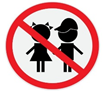The Dunbars: An Unexpectedly Small Family
 If you were an early 19th-century couple with twelve children, how many grandchildren would you expect to have? In 1850, the average household had 6-9 children.
If you were an early 19th-century couple with twelve children, how many grandchildren would you expect to have? In 1850, the average household had 6-9 children.
Would it have been reasonable, then, to anticipate around 60 grandchildren?
Not if you were my ancestors Rhoda Hall (1784-1850) and Benjamin E. Dunbar (1776-1831). Their family in Stow, Ohio imploded.
I have spent many hours this year tracing their children and grandchildren. The children fall into two groups: those with children and those without.
The Childless Dunbars
- Saphronia (1806-1849). She married George Tiffany in 1832 but they had no family. She left her entire estate to him.
- Rhoday (1807-bef. 1810). This daughter died in childhood.
- Daniel H. (1809-?). I am not sure Daniel belongs in this group. He disappears from the record after a land sale in 1843. No marriage or death records for him have been found.
- Benjamin S. (1812-aft. 1880). He married Lucy Jaquays in 1846, but they split after a short marriage and no children. He never married again.
- Moses W. (1814-1906). A mariner based in Cleveland, he married twice. He had no children with either wife, Mary Ann Sellers or Mary Jones.
- Lucy S. (1827-1899). She married her sister Saphronia’s widower, George Tiffany, in 1853. After his death in 1869, she married George Monk. Both marriages were childless. A niece, Lucy S. Sessions, was named after her.
- Laura A. (1829-1899). In 1852 she married Hoxie Fuller. They had no children, but her sister Olive named two children for the couple: Laura Ruamy Riddle and John Hoxey Riddle.
Dunbars with Children
- Rhoda A. (1811-1879). She married William Burnham in 1846. They had one son, Leander Burnham.
- Rebecca W. (1817-1873). She never married, but her brother Benjamin lived with her after he separated from his wife. Rebecca and Benjamin raised a child, Mahala Dunbar. I surmise that Mahala was Rebecca’s daughter.
- Susannah H. (1819-1900). She married Joel Cutting in 1838. This couple had three children, Dewitt, Mary Edna, and Clara.
- Hannah S. (1821-1890). After their marriage in 1843, Hannah and her husband, John Sessions, also had three children, Violetta, Samuel, and Lucy S.
- Olive H. (1823-1902). She and her husband, John Davis Riddle, were my ancestors, and they had the largest family with 8 children: Tamson, Theodocia, Isaac, Ethan, Laura, John, Seymour, and Olive Riddle.
Of the twelve children born to Rhoda and Benjamin Dunbar, then, only one (my great-great grandmother Olive) had an average mid-19th century size family. The Dunbars had just 16 grandchildren.
I cannot account for why the six siblings who reached adulthood and married would have had no children. Because this group included all three sons, the Dunbar name daughtered out.
Of those sixteen grandchildren, nearly half repeated the pattern of remaining childless: Leander Burnham, Mary Edna Cutting, Clara Cutting, Violetta Sessions, Lucy S. Sessions, Isaac Riddle, and Seymour Riddle. The number of Dunbar descendants remained small into the twentieth century. It grew somewhat once great-grandchildren began to arrive.
I have no explanation for this unusual family pattern. Most couples during this time period had many more children than the Dunbars did. Were there health problems? I will never know.
I am ready to move back a generation and investigate the family of the patriarch, Benjamin E. Dunbar. How many siblings did he have? Did they leave descendants? Or will I find another round of small and non-existent families?